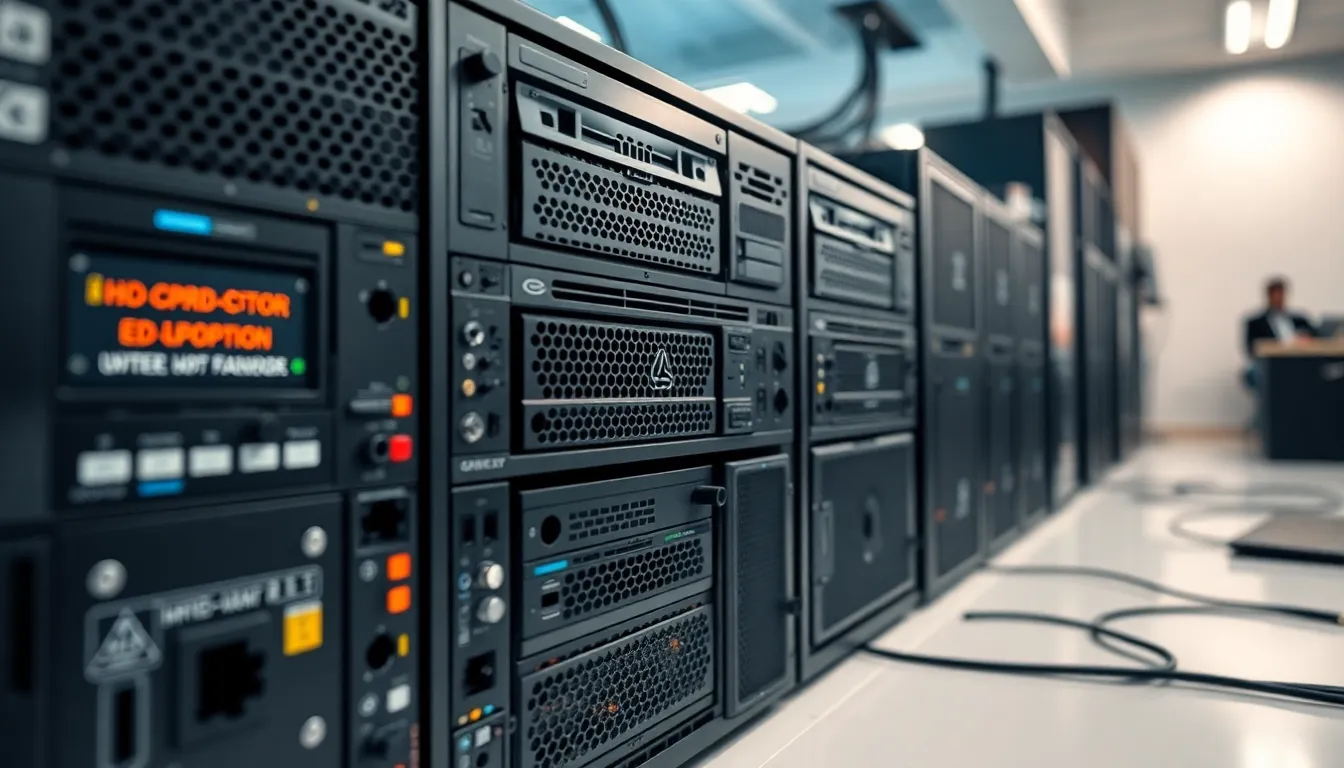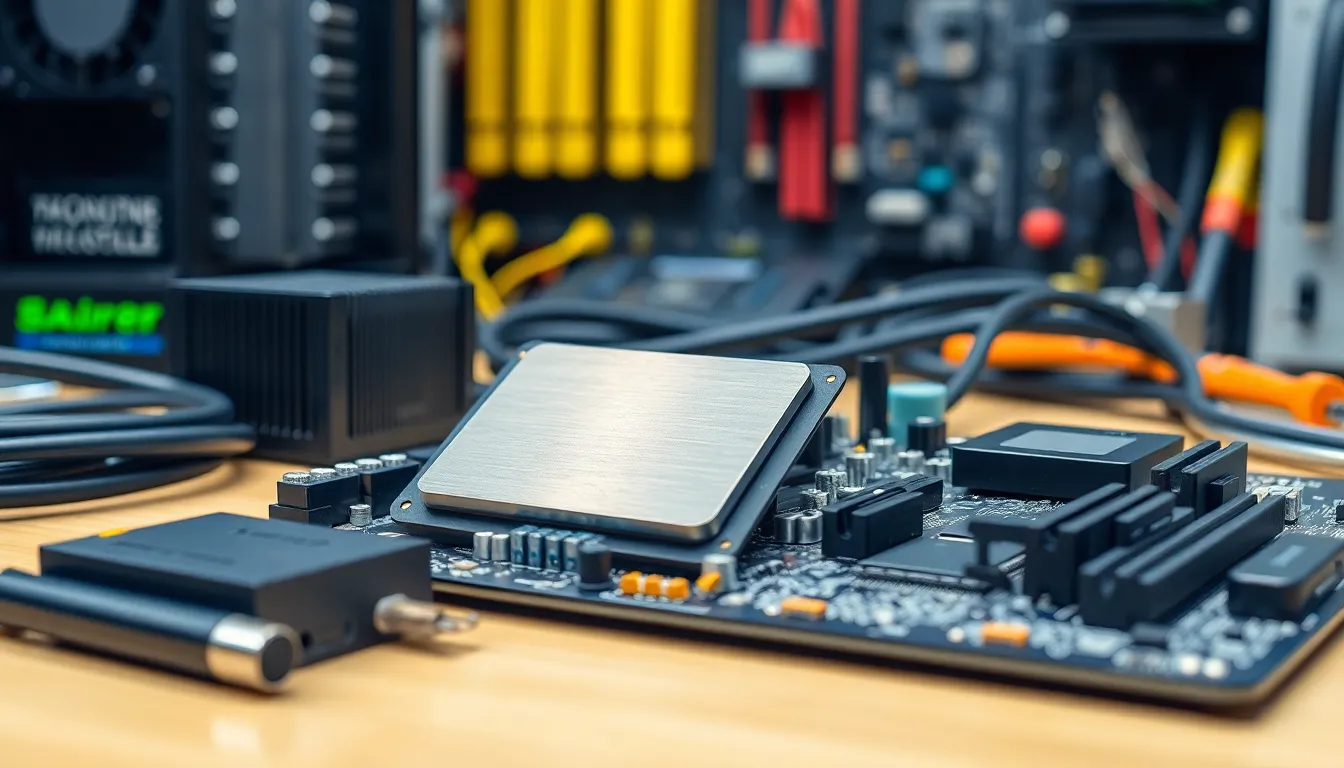In a world where technology seems to evolve faster than anyone can keep up, rocky hardware manages to stand out like a stubborn boulder in a stream. This quirky yet essential component of the tech landscape has a way of making even the most seasoned experts scratch their heads in wonder. Whether it’s an unexpected glitch or a stubborn connection issue, rocky hardware can turn a smooth sailing project into a wild ride.
Table of Contents
ToggleOverview of Rocky Hardware
Rocky hardware refers to computer components that exhibit unpredictable behavior, affecting projects significantly. Various factors contribute to this unreliability, including subpar manufacturing standards and compatibility issues. Unexpected glitches frequently occur, disrupting processes that depend on seamless operation.
Connection problems represent another crucial aspect of rocky hardware. Devices often fail to communicate efficiently, leading to frustration for users who expect consistent performance. Specific examples include unreliable network cards that drop connections intermittently or storage devices that slow down access speeds.
This unreliability impacts both novices and experienced professionals. Experts face challenges when diagnosing issues, as the source may not be immediately apparent. For newcomers, navigating rocky hardware can turn a simple task into a daunting problem.
Reliability plays a significant role in project success. Integrating reliable hardware from reputable brands helps mitigate these risks. Investing in quality components reduces the likelihood of encountering rocky hardware, enabling smoother operations and promoting efficient workflows.
Ultimately, recognizing the signs of rocky hardware enhances troubleshooting efforts. Identifying erratic behaviors early assists in developing appropriate responses. Sticking with established brands often results in fewer disruptions and promotes an overall positive experience.
Features of Rocky Hardware


Rocky hardware presents distinct features impacting both performance and scalability. Understanding these aspects is crucial for successful project implementation.
Performance Capabilities
Performance capabilities of rocky hardware often fluctuate, leading to unpredictable operation. Users encounter intermittent slowdowns that can hinder workflow efficiency. Instances of delayed data processing arise due to inadequate component quality. Another notable issue involves inconsistent connection speeds, especially with network devices. Regularly, these hardware inconsistencies create bottlenecks that agencies and individuals must address promptly. Prioritizing high-quality components from reputable manufacturers can mitigate these performance issues, ensuring smoother project execution.
Scalability Options
Scalability options in rocky hardware vary significantly, influencing how well systems adapt to increasing demands. Systems might struggle to integrate additional components seamlessly, resulting in compatibility challenges. Frequent upgrades become necessary to accommodate advanced applications or larger datasets. Users experience setbacks when trying to enhance hardware capabilities due to unexpected glitches. Focus on flexible solutions from credible brands supports smoother scaling, especially as project requirements change. Adopting versatile hardware enhances long-term viability and reduces disruptions during expansion.
Benefits of Using Rocky Hardware
Rocky hardware presents both challenges and distinct advantages, making it vital to understand its benefits in various projects.
Cost-Effectiveness
Choosing rocky hardware leads to potential cost savings. Budget-friendly components often attract users looking for economical solutions. Lower initial prices can quickly become more appealing than higher-priced, reliable options. Companies frequently find themselves facing repair costs, which can outweigh the initial savings. Affordable devices, while tempting, often require more frequent replacements. For users managing tight budgets, understanding long-term costs tied to rocky hardware investments is crucial.
Reliability and Durability
Rocky hardware’s behavior often raises concerns about reliability and durability. Users experience unexpected disruptions, which can hinder productivity significantly. Devices that fail to perform consistently force teams to reassess their hardware choices. Trusting well-known brands can enhance reliability, leading to smoother project execution. Durability also plays a critical role, with quality components generally offering longer lifespans. Well-manufactured hardware reduces maintenance concerns and minimizes downtime during critical operations. Prioritizing performance over initial costs can promote a more seamless technology experience.
Use Cases for Rocky Hardware
Rocky hardware plays a significant role in various tech environments, although its unpredictable nature can lead to challenges. Understanding these use cases helps users navigate potential pitfalls.
Data Centers
Data centers often rely on a myriad of hardware components, where rocky hardware can emerge as a critical issue. Unstable network cards may lead to frequent disruptions, hindering data flow between servers. Instances of slow storage devices can result in delayed access to vital information, affecting overall performance. Despite these challenges, some budget-conscious data center operators opt for cost-effective solutions. Choosing components from established brands minimizes risks associated with rocky hardware, thus promoting more efficient operations and better uptime. Regular maintenance and monitoring can also help identify problematic components early, enabling technicians to address issues before they escalate.
Cloud Computing
Cloud computing environments also showcase the implications of rocky hardware. Inconsistent performance from unreliable components can disrupt cloud services, affecting user experience. Users might encounter delays in processing requests or service outages due to malfunctioning hardware. Stability becomes essential, as businesses may rely heavily on cloud services for critical operations. Investing in robust hardware from reputable vendors ensures better reliability and fewer unexpected technical issues. Moreover, monitoring software can provide insights into hardware performance, helping IT teams identify and replace faulty components proactively. Emphasizing quality over cost enhances the overall effectiveness of cloud solutions, paving the way for reliable and scalable services.





